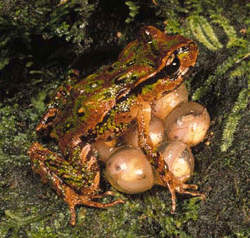This task is about using information about native frogs to think about possible threats to their survival.
 |
In New Zealand we also have four species of native frogs. One thing that is different about them from most other frogs is their unusual life cycle.
|